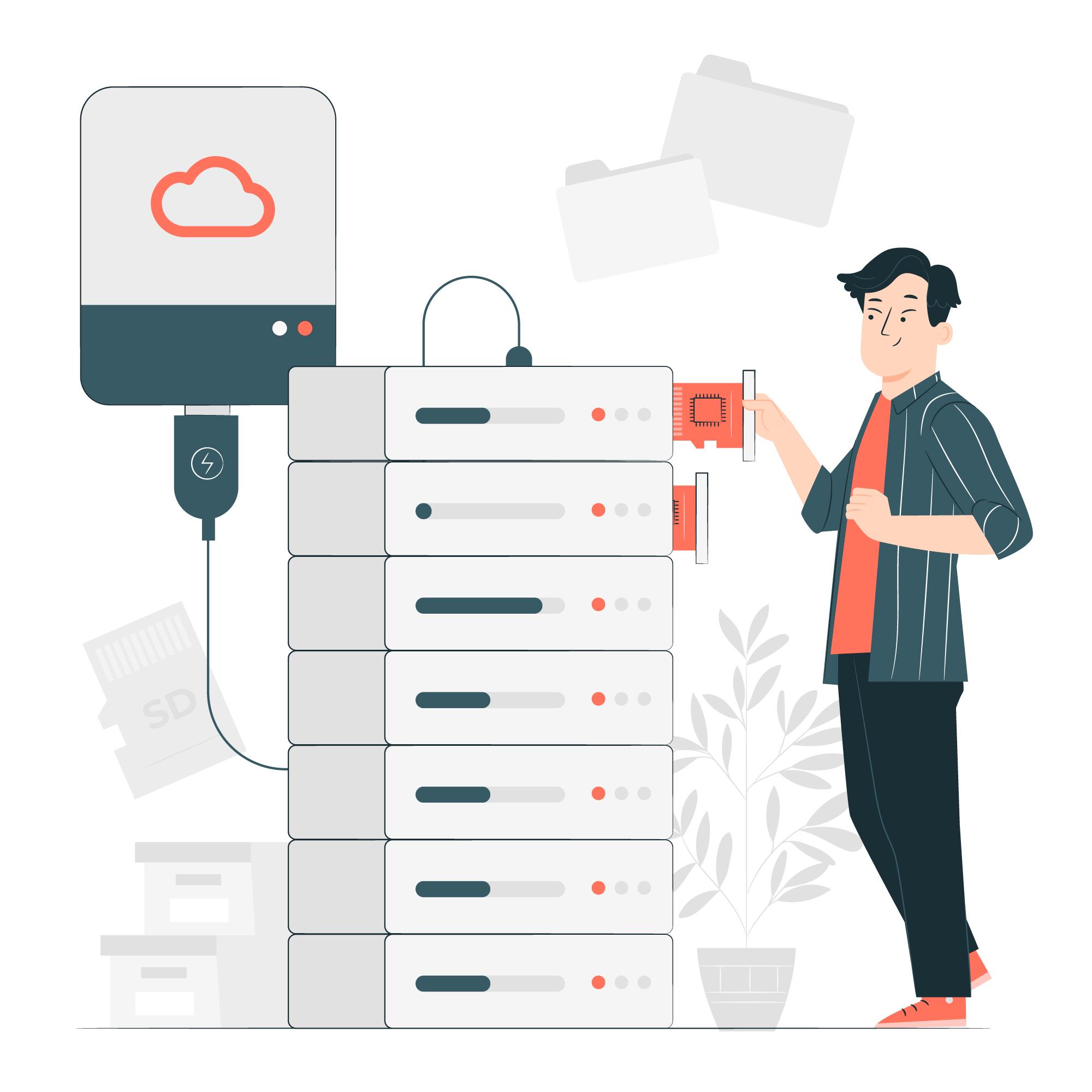Compute Engine in GCP
Last updated 28 th.Mar.2024
Contents
Introduction to Google Cloud Platform (GCP)
Overview of GCP services: GCP provides a diverse set of services across various categories, including compute, storage, databases, networking, machine learning, big data, and IoT. Some of the key services offered by GCP include Compute Engine, Google Kubernetes Engine (GKE), Google Cloud Storage, BigQuery, Cloud Spanner, and Cloud Pub/Sub, among others.
Importance of Compute Engine: Compute Engine is one of the core services offered by GCP, providing virtual machines (VMs) on Google’s infrastructure. It enables users to run workloads in a scalable, reliable, and secure environment. Compute Engine allows organizations to deploy and manage virtual machines in the cloud, providing flexibility, performance, and cost-efficiency.
Compute Engine is particularly crucial for businesses and developers who require on-demand access to compute resources without the need to manage physical hardware. Whether it’s running applications, hosting websites, performing batch processing, or running machine learning workloads, Compute Engine offers the necessary infrastructure to support a wide range of use cases.
Understanding Compute Engine in GCP
What is a Compute Engine?
Compute Engine is a high-performance, scalable virtual machine (VM) hosting service offered by Google Cloud Platform (GCP). It allows users to create and manage virtual machines on Google's infrastructure, providing computing resources on demand.Google Compute Engine enables organizations to run various types of workloads, from simple web applications to complex data processing tasks, in a reliable and secure environment.
Key features and benefits:
Once data is ingested into GCP, it undergoes processing and transformation to extract valuable insights and prepare it for further analysis. Google Cloud Dataflow emerges as a powerful tool for orchestrating data processing pipelines in GCP, offering a fully managed and scalable solution based on the Apache Beam programming model.
- Scalability: Compute Engine allows users to scale virtual machine instances up or down based on demand, ensuring optimal performance and cost-efficiency.
- Flexibility: Users have the flexibility to choose from a wide range of machine types, including standard, high-memory, high-CPU, and custom machine types, to meet specific workload requirements.
- Global infrastructure: Compute Engine offers a global network of data centers, allowing users to deploy virtual machine instances in multiple regions around the world for improved latency and redundancy.
- Customization: Users can customize virtual machine instances with various operating systems, software configurations, and networking settings to suit their specific needs.
- Integration: Compute Engine seamlessly integrates with other GCP services, such as Google Kubernetes Engine (GKE), Cloud Storage, BigQuery, and more, enabling users to build comprehensive cloud-based solutions.
- Pay-as-you-go pricing: Compute Engine follows a pay-as-you-go pricing model, allowing users to pay only for the resources they use, with no upfront costs or long-term commitments.
Use cases:
Compute Engine is suitable for a wide range of use cases across industries and applications, including:
- Hosting websites and web applications
- Running enterprise applications and databases
- Performing data processing and analytics tasks
- Hosting development and testing environments
- Running machine learning and artificial intelligence workloads
- Supporting high-performance computing (HPC) and scientific computing applications
Getting Started with Compute Engine in GCP
Setting up a GCP account: Before you can start using Compute Engine, you'll need to create a Google Cloud Platform (GCP) account. If you don't already have one, you can sign up for a free trial or a paid account at. Once you've created an account, you'll need to set up billing information and create a project to organize your resources.
Creating a Compute Engine instance: Once you have a GCP account and project set up, you can create a Compute Engine instance. Here's how to do it:
- Navigate to the Compute Engine section of the Google Cloud Console: Log in to the Google Cloud Console at and select the project you want to use.
- Create a new virtual machine instance: Click on the “Create” button to create a new virtual machine instance. You’ll be prompted to provide information such as the instance name, machine type, boot disk type, and operating system image.
- Configure instance settings: Customize the instance settings according to your requirements, including specifying the machine type (e.g., standard, high-memory, high-CPU), selecting the boot disk type and size, choosing the operating system image (e.g., Debian, Ubuntu, CentOS), and configuring networking options.
- Optional settings: You can also configure additional settings such as adding GPUs, enabling preemptible VMs for short-lived workloads, and configuring metadata and startup scripts.
- Review and create: Once you’ve configured the instance settings, review the configuration and click the “Create” button to create the virtual machine instance. Google Cloud Platform will provision the instance according to your specifications, and you’ll be able to see the new instance listed in the Compute Engine section of the Cloud Console.
Choosing machine types and configurations
Compute Engine offers a variety of machine types and configurations to suit different workload requirements. Here are some factors to consider when choosing machine types and configurations:
- Standard vs. custom machine types: Compute Engine offers predefined machine types with fixed vCPU and memory configurations, as well as custom machine types where you can specify the exact number of vCPUs and amount of memory for your instance.
- CPU and memory requirements: Consider the CPU and memory requirements of your workload when choosing a machine type. For CPU-intensive workloads, you may need a machine type with more CPU cores, while for memory-intensive workloads, you may need a machine type with more memory.
- Storage options: Compute Engine offers various storage options, including standard persistent disks, SSD persistent disks, and local SSDs. Choose the appropriate disk type and size based on your storage requirements and performance needs.
- Networking settings: Configure networking settings such as network tags, firewall rules, and external IP addresses to control access to your virtual machine instances and ensure network security.
Compute Engine Components
Virtual Machines (VMs)
Virtual machines are the fundamental building blocks of Compute Engine. Each virtual machine instance represents a virtualized computing environment that runs on Google's infrastructure. VMs can be customized with different machine types, operating systems, and software configurations to meet specific workload requirements. Compute Engine supports various operating systems, including Linux distributions (e.g., Debian, Ubuntu, CentOS) and Windows Server.
Disks and storage options
Compute Engine offers several storage options for virtual machine instances:
- Boot disks: Boot disks are persistent disks that contain the operating system and boot files for the virtual machine instance. You can choose from standard persistent disks or SSD persistent disks for improved performance.
- Additional disks: In addition to boot disks, you can attach additional persistent disks to virtual machine instances to store data or application files. Compute Engine also supports local SSDs for temporary storage with high I/O performance.
- Snapshots and images: Compute Engine allows you to create snapshots of persistent disks to capture a point-in-time backup of disk data. You can also create custom images from snapshots or existing virtual machine disks to use as templates for new instances.
Networking features
Compute Engine provides robust networking features to connect virtual machine instances to each other and to external networks.
- Virtual Private Cloud (VPC): VPC networks allow you to create isolated virtual networks for your Compute Engine instances, providing control over IP addressing, routing, and firewall rules.
- Firewall rules: Compute Engine allows you to define firewall rules to control incoming and outgoing traffic to virtual machine instances. You can create firewall rules based on IP addresses, protocols, and ports to restrict access and enhance security.
- External IP addresses: Compute Engine provides options for assigning external IP addresses to virtual machine instances, including ephemeral IP addresses that are temporarily assigned and static IP addresses that remain constant.
Scalability and load balancing
Compute Engine offers features for scaling virtual machine instances and distributing traffic across multiple instances:
- Instance groups: Instance groups allow you to manage collections of virtual machine instances as a single entity, making it easier to scale instances up or down based on demand. Compute Engine supports managed instance groups for automatic scaling and unmanaged instance groups for manual control.
- Autoscaling: Compute Engine’s auto scaling feature automatically adjusts the number of virtual machine instances in a managed instance group based on CPU utilization, load balancing capacity, or other metrics. Autoscaling helps optimize resource usage and ensure consistent performance during peak traffic periods.
- Load balancing: Compute Engine provides load balancing services to distribute incoming traffic across multiple virtual machine instances, improving availability and performance. Compute Engine supports HTTP(S) load balancing, TCP/UDP load balancing, and SSL proxy load balancing.
Managing Compute Engine Instances
Once you’ve created virtual machine instances on Compute Engine, it’s essential to effectively manage and monitor them to ensure optimal performance, reliability, and security. Compute Engine in GCP provides various tools and features for managing instances, including monitoring and logging, instance groups, and snapshots.
Monitoring and logging
Compute Engine in GCP offers built-in monitoring and logging capabilities to help you track the performance and health of your virtual machine instances:
- Stackdriver Monitoring: Stackdriver Monitoring provides visibility into the performance metrics of your virtual machine instances, including CPU utilization, memory usage, disk I/O, and network traffic. You can create custom dashboards and alerts to monitor specific metrics and detect performance issues.
- Stackdriver Logging: Stackdriver Logging allows you to view and analyze logs generated by your virtual machine instances, including system logs, application logs, and audit logs. You can search and filter logs, create log-based metrics, and export logs to other storage destinations for long-term retention and analysis.
Instance groups and autoscaling
- Managed instance groups: Managed instance groups allow you to create and manage groups of identical virtual machine instances, known as replicas. Compute Engine automatically distributes incoming traffic across instances in the group and performs health checks to ensure instances are responsive. You can configure auto scaling policies to automatically add or remove instances based on traffic load or other metrics.
- Unmanaged instance groups: Unmanaged instance groups are collections of virtual machine instances that you manage manually. Unlike managed instance groups, unmanaged instance groups do not offer auto scaling capabilities, so you must add or remove instances manually as needed.
Snapshots and backups
Compute Engine allows you to create snapshots of persistent disks to capture a point-in-time backup of disk data:
Snapshots: Snapshots are incremental backups of persistent disks that capture the state of the disk at a specific moment. You can create snapshots manually or schedule them to run automatically on a recurring basis. Snapshots are stored in Google Cloud Storage and can be used to create new disks or restore data in case of disk failure or data loss.
Security and access control:
- Identity and Access Management (IAM): IAM allows you to manage access to Compute Engine resources by granting roles to users, groups, and service accounts. You can define fine-grained permissions to control who can create, modify, or delete instances and disks.
- Firewall rules: Compute Engine’s firewall rules allow you to control inbound and outbound traffic to virtual machine instances based on IP addresses, protocols, and ports. You can create firewall rules to restrict access to specific ports or services and prevent unauthorized access to your instances.
Security in Compute Engine

Security is a paramount concern when using Compute Engine to host virtual machine instances in the cloud. Google Cloud Platform (GCP) provides a robust set of security features and best practices to help you protect your Compute Engine instances and data from unauthorized access, data breaches, and other security threats.
Identity and Access Management (IAM)
- Principle of least privilege: Grant only the permissions necessary for users, groups, and service accounts to perform their intended tasks. Avoid granting overly broad permissions that could lead to security vulnerabilities.
- Use of IAM roles: Assign IAM roles to users, groups, and service accounts based on their responsibilities and level of access required. GCP provides predefined IAM roles with specific permissions for Compute Engine resources, such as Compute Instance Admin and Compute Security Admin.
Firewall rules and network security
Compute Engine’s firewall rules allow you to control inbound and outbound traffic to virtual machine instances based on IP addresses, protocols, and ports. Best practices for firewall rules and network security include:
- Default deny: Set default firewall rules to deny all inbound and outbound traffic by default and explicitly allow only necessary traffic based on specific requirements. This helps minimize the attack surface and reduce the risk of unauthorized access.
- Least privileged access: Restrict access to virtual machine instances by creating firewall rules that allow only trusted IP addresses, protocols, and ports. Use network tags and service accounts to apply firewall rules selectively to specific instances or groups of instances.
Data encryption
Compute Engine in GCP offers encryption features to protect data at rest and in transit:
- Data encryption at rest: Encrypt sensitive data stored on persistent disks using Google-managed encryption keys or customer-supplied encryption keys. Google Cloud Storage and Google Cloud SQL also support encryption at rest to protect data stored in object storage and relational databases.
- Data encryption in transit: Use HTTPS and SSL/TLS encryption to secure communication between clients and virtual machine instances over the network. Compute Engine provides SSL proxy load balancing and TCP/UDP load balancing with SSL termination to encrypt traffic between clients and backend instances.
VPC Service Controls
Security best practices
- Regular security audits and assessments: Conduct regular security audits and assessments of your Compute Engine resources to identify and remediate security vulnerabilities and compliance issues.
- Security monitoring and incident response: Implement security monitoring tools and processes to detect and respond to security incidents in a timely manner. Use tools such as Stackdriver Monitoring, Stackdriver Logging, and Cloud Security Command Center to monitor for suspicious activities and security events.
- Employee training and awareness: Provide security training and awareness programs for employees to educate them about security best practices, policies, and procedures for using Compute Engine and other GCP services securely.
Optimizing Performance and Cost
Best Practices for Performance
- Right-sizing instances: Choose the appropriate machine type and configuration for your workloads based on CPU, memory, and storage requirements. Avoid over-provisioning resources to minimize costs while ensuring adequate performance.
- Utilizing managed instance groups: Use managed instance groups to automatically scale the number of virtual machine instances based on demand. Configure autoscaling policies to add or remove instances dynamically to meet workload requirements.
- Optimizing disk performance: Select the appropriate disk type (standard persistent disk, SSD persistent disk, or local SSD) based on your application’s I/O requirements. Consider using SSD persistent disks for high-performance workloads that require low latency and high throughput.
- Networking optimization: Optimize network performance by selecting the appropriate network bandwidth and latency for your virtual machine instances. Use VPC peering and dedicated interconnects for low-latency, high-bandwidth communication between instances and other GCP services.
- Efficient application design: Design your applications for scalability and performance by leveraging microservices architecture, asynchronous processing, and distributed computing principles. Use caching mechanisms and content delivery networks (CDNs) to reduce latency and improve responsiveness.
Best Practices for Cost Efficiency
- Resource optimization: Continuously monitor and analyze resource utilization to identify idle or underutilized instances and disks. Right-size instances and disks based on actual usage patterns to minimize costs while ensuring performance.
- Use of preemptible VMs: Take advantage of preemptible VMs for non-critical, fault-tolerant workloads that can tolerate interruptions. Preemptible VMs offer significant cost savings compared to regular VMs, but they may be terminated by Google Compute Engine with short notice.
- Reserved instances: Commit to using Compute Engine resources for a specified period by purchasing reserved instances. Reserved instances offer discounted pricing compared to on-demand instances, making them cost-effective for predictable workloads with steady usage.
- Sustained use discounts: Benefit from sustained use discounts by running VM instances continuously over extended periods. Compute Engine in GCP automatically applies discounts based on the aggregate usage of VM instances in a particular region and machine family.
- Use of preemptible VMs: Take advantage of preemptible VMs for non-critical, fault-tolerant workloads that can tolerate interruptions. Preemptible VMs offer significant cost savings compared to regular VMs, but they may be terminated by Google Compute Engine with short notice.
Integrations and Tools
Google Cloud Platform’s Compute Engine offers a range of integrations and tools to enhance functionality, automate processes, and streamline operations. These integrations and tools allow users to extend the capabilities of Compute Engine in GCP and integrate seamlessly with other Google Cloud services and third-party solutions.
Compute Engine APIs
Google Cloud Platform provides a set of RESTful APIs that allow developers to programmatically interact with Compute Engine resources. These APIs enable automation of tasks such as creating and managing virtual machine instances, configuring networking settings, and monitoring resource usage. By integrating with Compute Engine APIs, users can automate deployment processes, scale resources dynamically, and streamline operations.
Deployment Manager
Deployment Manager is a Google Cloud Platform service that allows users to define, deploy, and manage cloud resources using declarative configuration files. With Deployment Manager, users can define the desired state of Compute Engine resources, including virtual machine instances, disks, networks, and firewall rules, in a configuration file written in YAML or Jinja2 format.
Deployment Manager then automates the process of provisioning and configuring resources based on the defined configuration, ensuring consistency and repeatability in deployments.
Cloud SDK and Cloud Shell
Integrations with other GCP services
Compute Engine integrates seamlessly with other Google Cloud Platform services, enabling users to build comprehensive cloud-based solutions. Some key integrations include:
- Google Kubernetes Engine (GKE): Compute Engine instances can be used as worker nodes in Kubernetes clusters deployed on Google Kubernetes Engine. This integration allows users to leverage the scalability and flexibility of Compute Engine for running containerized workloads orchestrated by Kubernetes.
- Cloud Storage: Compute Engine instances can access and interact with data stored in Google Cloud Storage buckets. This integration enables users to store and retrieve data from Cloud Storage within Compute Engine instances, facilitating data processing and analysis workflows.
- BigQuery: Compute Engine instances can interact with BigQuery datasets and perform data analysis and processing using BigQuery’s SQL-like query language. This integration allows users to leverage the scalability and performance of BigQuery for analyzing large datasets within Compute Engine instances.
Third-party integrations
Compute Engine can also integrate with third-party tools and services to extend functionality and meet specific requirements. For example, users can integrate Compute Engine with monitoring and logging solutions such as Prometheus and Grafana for monitoring resource usage and performance metrics, or with configuration management tools such as Puppet and Chef for automating server configuration and management tasks.
Conclusion

Google Cloud Platform’s Compute Engine is a powerful and versatile service that provides organizations with the infrastructure needed to run a wide range of workloads in the cloud. Throughout this article, we have explored the various aspects of Compute Engine in GCP, from its fundamental components to advanced features and best practices for performance optimization, cost efficiency, security, and integration.
Compute Engine in GCP offers virtual machine instances that can be customized to meet specific workload requirements, with options for selecting machine types, operating systems, disk types, and networking configurations. By leveraging managed instance groups, autoscaling, and load balancing, users can scale resources dynamically to handle fluctuating demand and ensure high availability and reliability.
In conclusion, Compute Engine in GCP empowers organizations to build, deploy, and scale applications and services in the cloud with flexibility, reliability, and security. Whether you’re running simple web applications, complex data processing tasks, or high-performance computing workloads, Compute Engine provides the infrastructure and tools needed to succeed in the cloud.
By leveraging Compute Engine in GCP effectively and adopting best practices, organizations can unlock the full potential of cloud computing and drive innovation and growth in their businesses.










